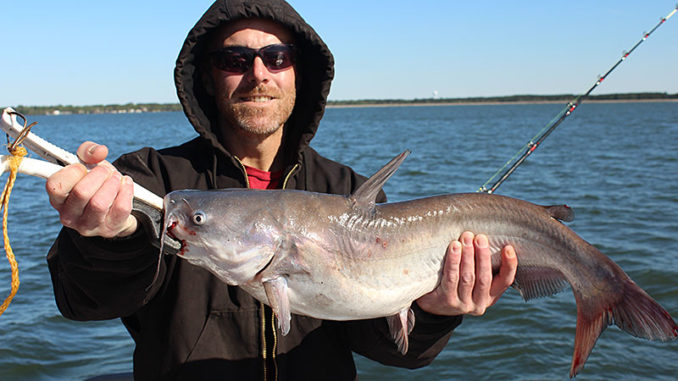
Unpredictable weather calls for slowing things down
As spring arrives in the Carolinas, usually bringing with it totally unpredictable, impossible-to-forecast weather, many anglers with visions of big catfish head toward the Santee-Cooper Lakes. Both Lakes Marion and Moultrie are nationally renowned for the size and quantity of cats they hold. And while many anglers tow their own boats to the ramps, others prefer to invest in a full-time guide.
Blacks Camp near Cross, SC is a favorite place to not only launch your own boat, but also to meet up with a variety of guides for many species. One reason Blacks is so popular is the fact that it’s located on the Diversion Canal, which connects the two lakes. Take a left to Marion, a right to Moultrie. That’s one of many reasons popular guides such as Captains Charles King, alias Captain Kingfish, and John Mercer make it their home landing.
Both men have been chasing catfish on the lakes for many years. Between them, they have enough fishing knowledge in their pinky fingers to teach most any catfish angler, beginner or expert, some tricks.
Slow it down
And while any number of methods will locate and catch Mr. Whiskers, one of their favorites is slow drifting.
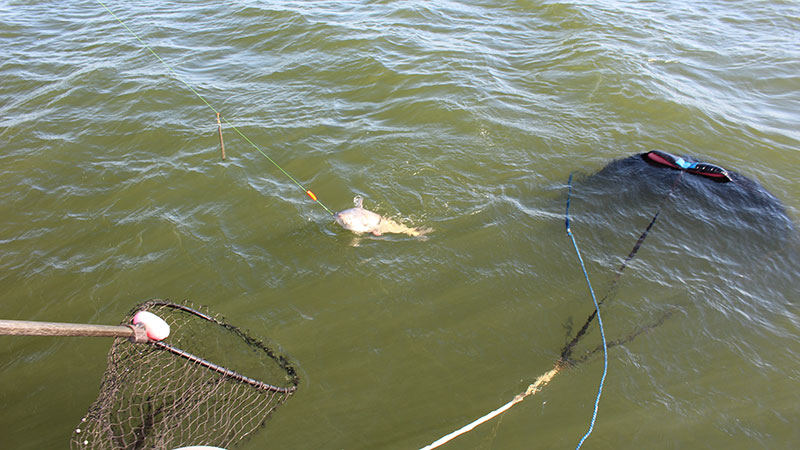
“This is a good way to locate fish in the spring,” King said. “With a slow drift, the baits will pass through different depths and types of bottom until we find them.”
Depending on the wind and other conditions, King will fish the lower end of Lake Moultrie near the dike and drift out toward open water. He will cover depths of 10 to 40 feet.
The captain said numerous brush piles throughout the area attract catfish. However, because you’re trying to keep your bait near the bottom, all that structure makes dragging a standard lead weight pretty tricky. That’s why so many fishermen, including King, use a Santee catfish rig with a slinky weight.
King (843-296-1083) likes to set up medium-heavy rods with the Santee rigs attached to Berkley Big Game 30-pound braided line. Even before he puts out the lines, he’s constantly checking his Lowrance HD12.
“We could get a bite anytime, anywhere,” he says. “It’s just a matter of being on them when they turn on. When the barometric pressure is dropping, it’ll actually squeeze the appetite right out of them. When it rises, they get their appetite back.
“Throw in a full moon and fluctuating water levels,” he said, “and that will mess them up as well. But they’re still out there and they have to eat some time.”
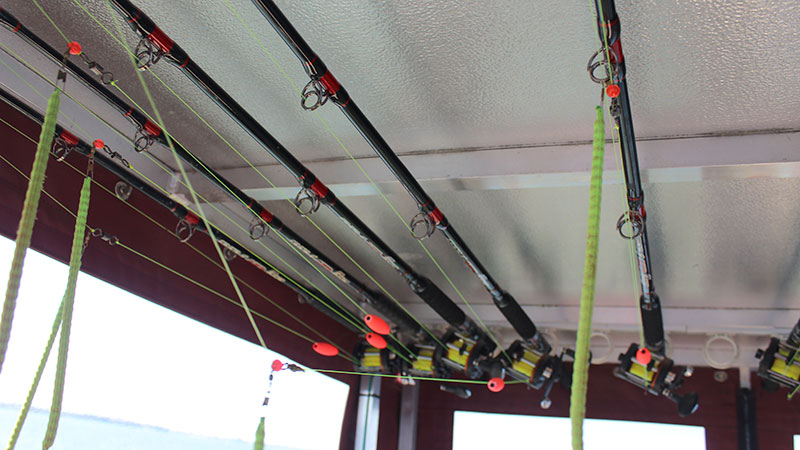 Of course, choosing the right bait is another concern. Cut bait is always the first choice. If you get a hunk of mullet, bream or shad close to him, and he’s in an eating mood, you should get a hit.
Of course, choosing the right bait is another concern. Cut bait is always the first choice. If you get a hunk of mullet, bream or shad close to him, and he’s in an eating mood, you should get a hit.
But one bait that’s become popular around Marion and Moultrie has an unusual moniker. “Strawberry chicken” is exactly what it sounds like.
Start shallow
“Just cut up some chicken breasts into chunks about the size of your thumb,” said King. “Then put the chicken in a plastic bag, add a packet of strawberry-flavored Jell-O, work it around real good until it’s all red. Then seal it and put it in the fridge overnight. The next morning it’s ready to go. Catfish love ‘em.”
John Mercer has guided out of Blacks Camp full-time for 3 years. During the spring, he likes to fish shallow for big blue cats. And he means really shallow.
“First thing in the morning till the sun gets up a good bit,” said Mercer (910-734-3845), “I like to anchor up close to the bank and cast to the shallow water. When I say ‘shallow,’ I mean a foot and a half to 3 feet of water.”
He went on to explain that the warmer water brings a good many baitfish up close this time of year. Plus, the fact the fish are starting to spawn is a big help. He even drifts in summer near the banks. He said that when you hook a catfish in a foot or two of water, they take off like a rocket.
He prefers to fish the upper reaches of Lake Moultrie. His favorite bait year-round is cut blueback herring. He also has good luck with cut perch, bream and, occasionally, mullet. Strawberry chicken is also a part of his menu in the early spring and fall.
So, what’s the best eating size? These guides consider 10- to 20-pound blue cats to be prime for skinning. Of course, 1-pounders and up are delicious as well, just not as much fun to catch.
But while most catfishermen are thrilled with a 10- or 20-pound catfish, many still set their sights on that 50-pound-plus monster. Or 60. Or 70. Or, who knows?
Consider the state record blue caught in Lake Moultrie weighed 113.8 pounds. And how about the brute hauled in on a trot line that weighed 136 pounds?
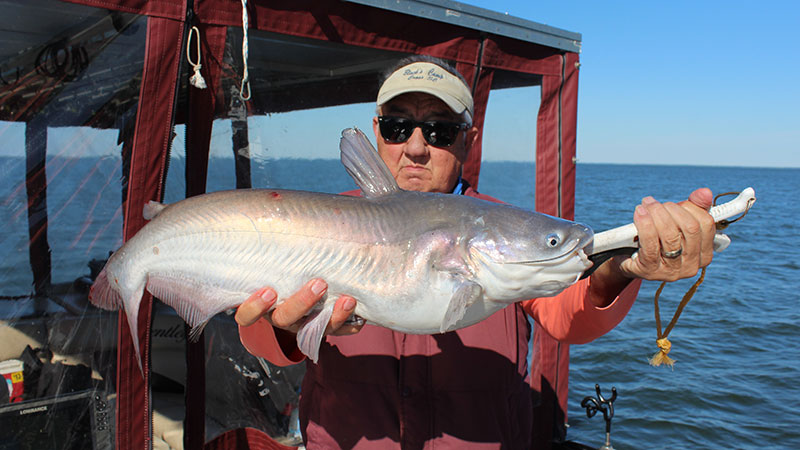
While blues comprise the majority of catfish in these lakes, plenty of channel cats and flatheads are present as well. If you’re lucky you might even snag a bullhead.
Should you land a monster catfish, it’s recommended that you get some quick photos, then release the beast to swim away and procreate the species. A giant catfish probably isn’t going to taste that great anyway.
Blacks Camp
Matt and Lori Micele purchased Blacks Camp in 2021, 70 years after it was established as a fish camp by Grace and Arnis Blackmon. Over the years, the business grew with the goal of providing a family-friendly getaway, complete with lodging, dining, and of course, ramps and docks for access to Lakes Marion and Moultrie.
Located on a quiet cove just off the 7 1/2-mile Diversion Canal, Blacks Camp provides easy access to both lakes. Today, Blacks Camp has lodging consisting of cabins, apartments and a campground. Located inside the main building is a home-cooking style restaurant, a large meeting room, and a bait and tackle shop.
For reservations at Blacks Camp, which is located at 1370 Blacks Camp Road in Cross, SC, call 843-753-2231.
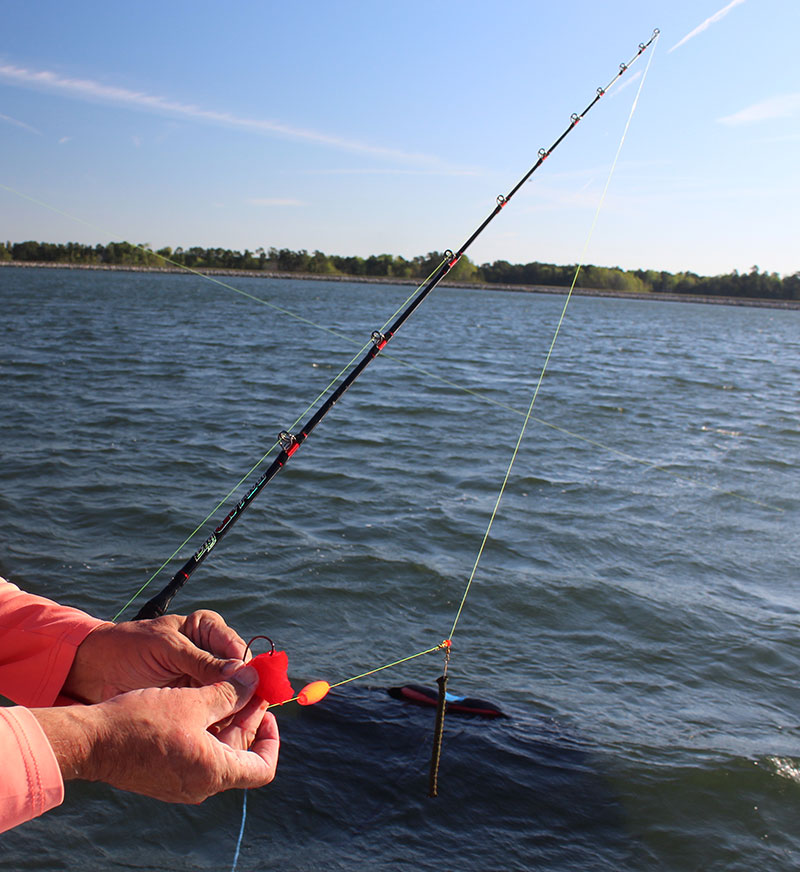
What is A Santee Rig?
A Santee catfish rig is designed to keep the bait near but not on the bottom. A heavy line (usually 30- to 60-pound test) is attached to a three-way swivel. On one end is a fixed float that’s several inches above a 6/0 circle hook. The other short line is attached to a 2-ounce slinky weight which “crawls” over and around snags (most of the time). This allows for more time actually fishing, and less time un-snagging or re-rigging.


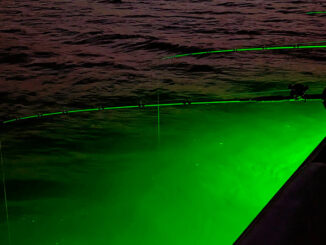

Be the first to comment